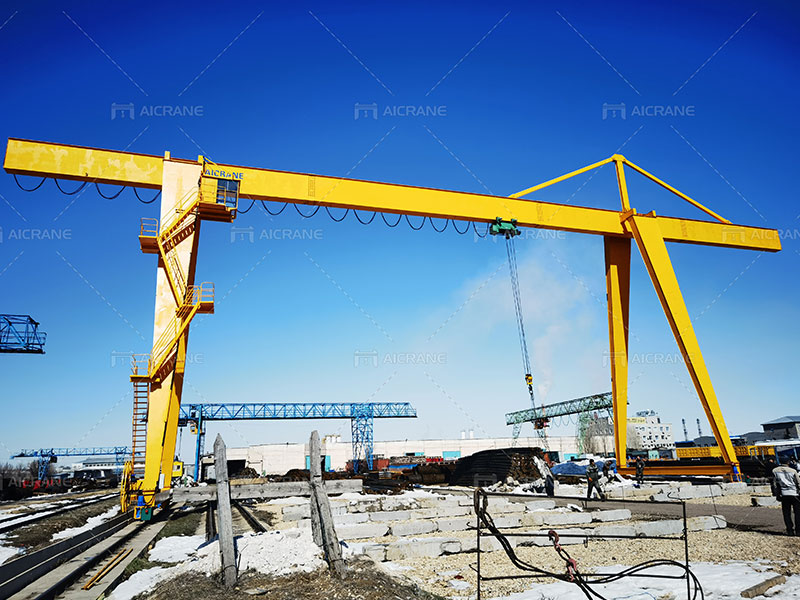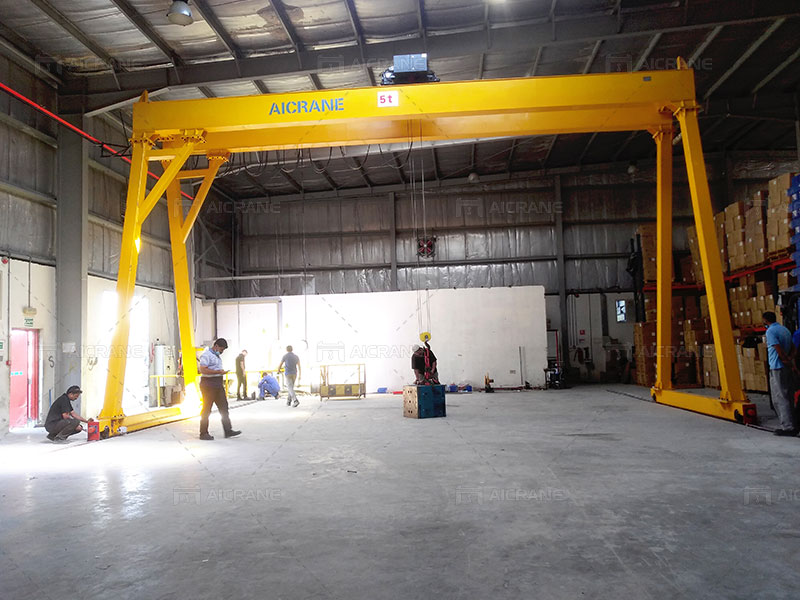Gantry cranes are essential equipment for various industries, enabling the efficient lifting and handling of heavy loads. One of the primary factors influencing the cost of a gantry crane is its load capacity. This article explores how gantry crane capacity impacts price, using 5-ton and 20-ton gantry cranes as examples to illustrate key considerations.

Factors That Affect Gantry Crane Prices
Several elements influence the gantry crane price, including:
- Load Capacity: Higher capacities typically require more robust materials, stronger components, and advanced engineering.
- Crane Type: Variations such as single girder, double girder, or portable gantry cranes impact pricing.
- Design Specifications: Span, lifting height, and additional features like cantilevers or custom designs can add to the cost.
- Materials and Components: Quality of steel, hoists, and motors affect durability and price.
- Technology and Automation: Features like remote controls, anti-sway mechanisms, and advanced monitoring systems increase costs.
- After-Sales Services: Installation, maintenance, and warranty packages also contribute to the total investment.
Price Comparison: 5-Ton vs. 20-Ton Gantry Cranes
To understand how load capacity affects pricing, let’s examine the cost differences between 5-ton and 20-ton gantry cranes.
1. Materials and Structural Design
A 5-ton gantry crane requires lighter materials compared to a 20 ton gantry crane. The latter’s structure must handle significantly higher loads, necessitating thicker steel, reinforced beams, and sturdier support systems. The cost of materials alone can double or triple as capacity increases.
- Example: A 5-ton single girder gantry crane may use a standard I-beam, while a 20-ton double girder crane demands heavy-duty box girders and additional bracing.

2. Hoisting Mechanism
The hoist capacity and motor power directly correlate with the crane’s load capacity. A 20-ton gantry crane needs a more powerful motor, a larger hoist, and a higher-grade wire rope compared to a 5-ton crane.
- Example: A 5-ton crane may have a 5 kW hoist motor, while a 20-ton crane may require a 20 kW motor, significantly increasing the cost.
3. Operational Efficiency
Higher capacity cranes often include advanced technologies to ensure safe and efficient operations. For example, a 20-ton crane may feature variable frequency drives (VFDs) for smooth speed control, whereas a 5 ton gantry crane might rely on basic control systems.
4. Custom Features and Configurations
Larger capacity cranes are often customized to meet specific industrial needs. A 20-ton gantry crane might include additional safety features like overload protection, specialized trolleys, or dual lifting mechanisms, driving up the price.
5. Installation and Maintenance
A 20-ton crane typically requires more complex installation and higher maintenance costs due to its size and components. Conversely, a 5-ton crane is easier to assemble and maintain, reducing overall operational expenses.
Approximate Pricing
While prices can vary depending on supplier and region, the following estimates provide a general idea:
- 5-Ton Gantry Crane: $5,000 to $15,000
- 20-Ton Gantry Crane: $30,000 to $70,000
The significant price gap reflects the differences in materials, engineering, and functionality between the two capacities.
Choosing the Right Crane for Your Needs
When selecting a gantry crane, it’s crucial to assess your specific operational requirements:
- Load Weight: Ensure the crane’s capacity exceeds your heaviest load for safety and longevity.
- Application Environment: Indoor or outdoor use, weather conditions, and available space can influence crane design.
- Frequency of Use: High usage rates may justify investing in advanced features and durable materials.
- Budget Constraints: Weigh upfront costs against long-term benefits such as reduced maintenance and increased efficiency.
Conclusion
The capacity of a gantry crane for sale significantly impacts its price due to variations in materials, engineering, and features. While a 5-ton gantry crane offers an economical solution for light-duty lifting, a 20-ton crane provides the power and functionality needed for heavier applications. By carefully evaluating your operational needs and budget, you can choose the right gantry crane to optimize your investment.